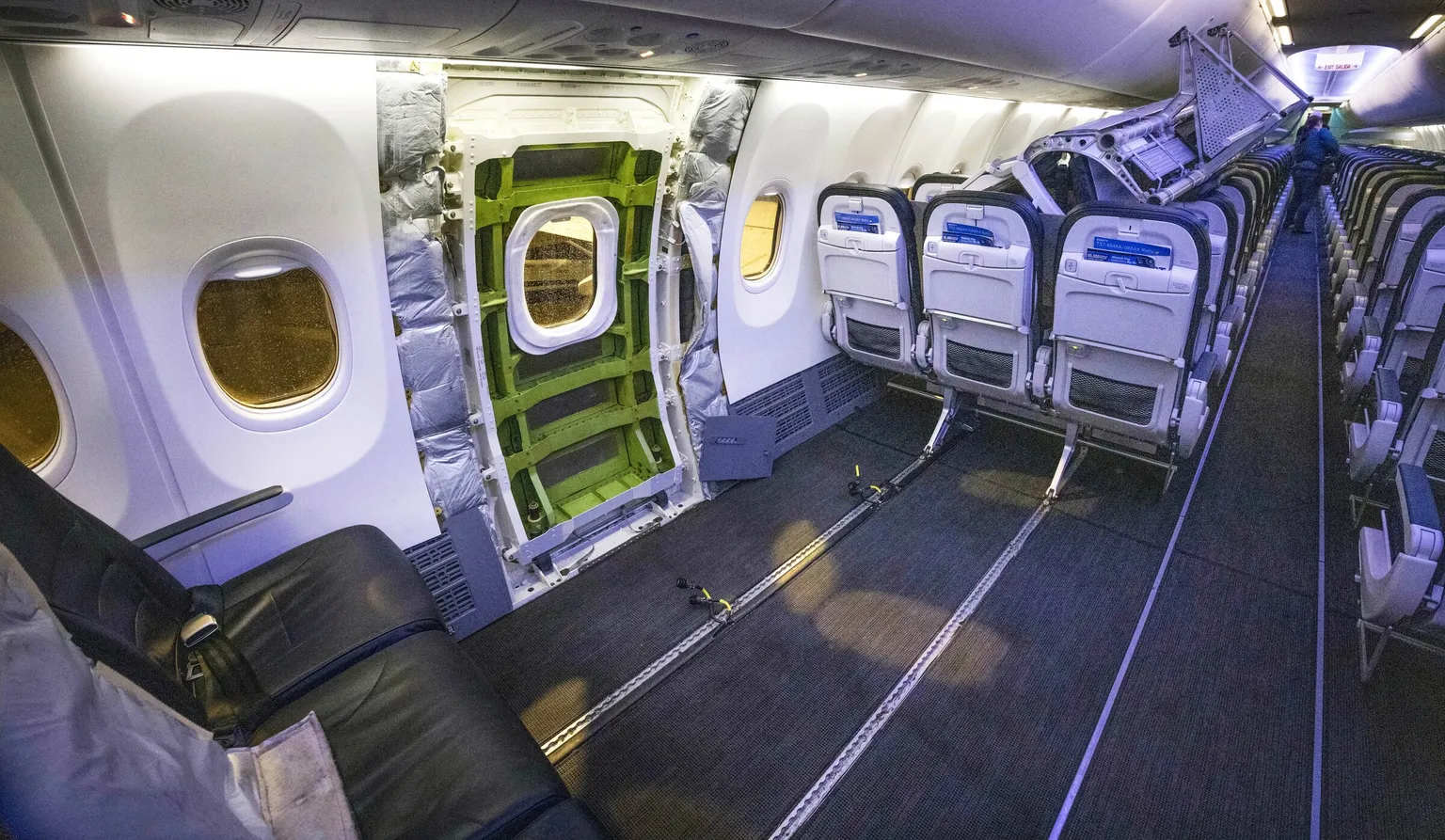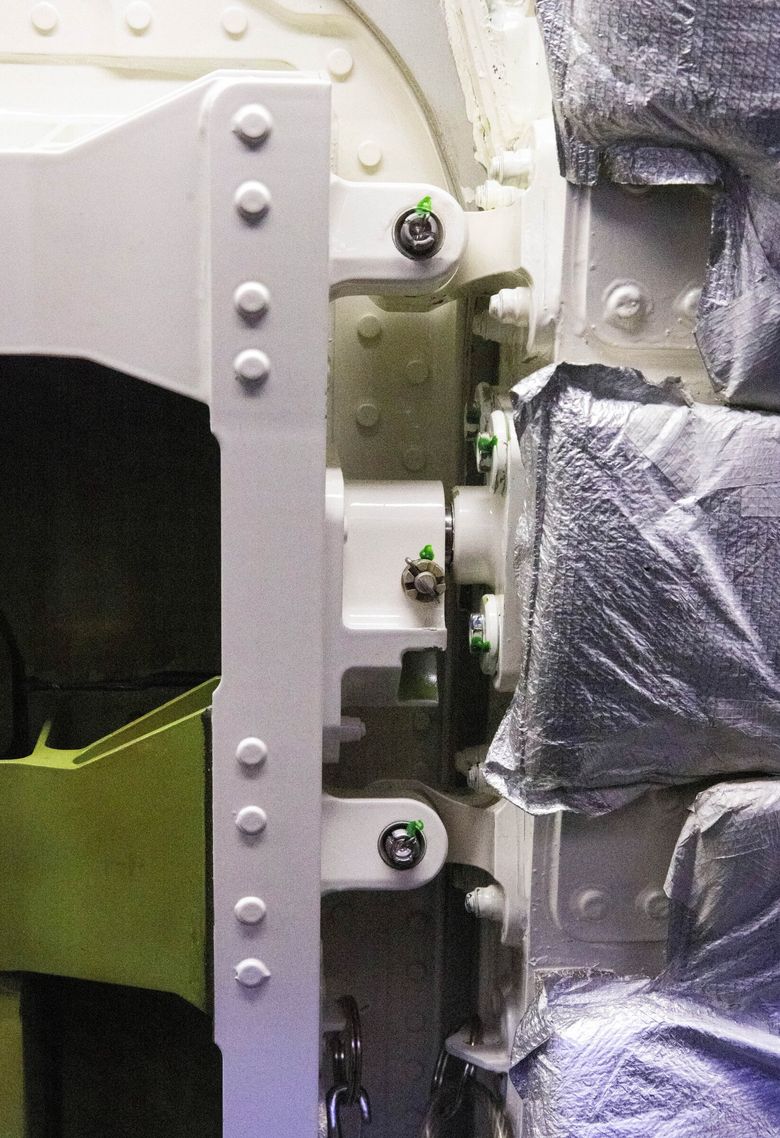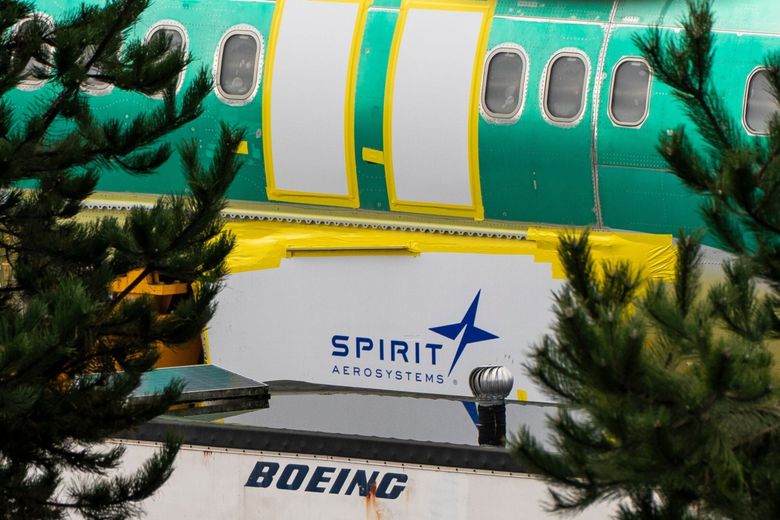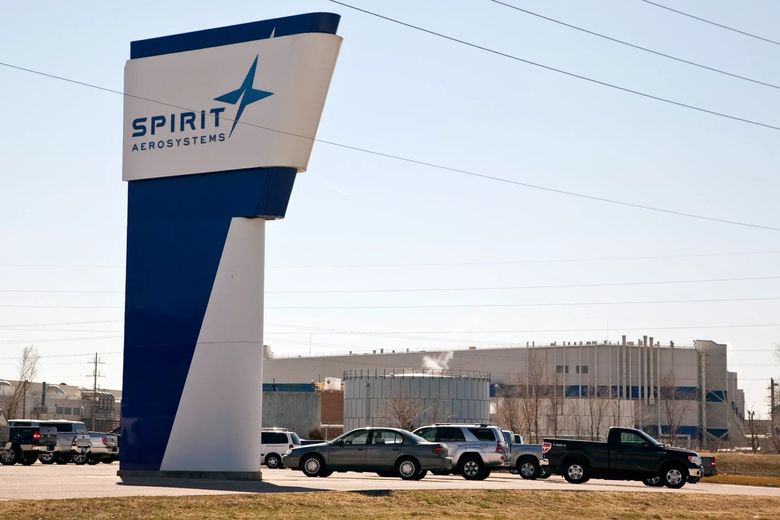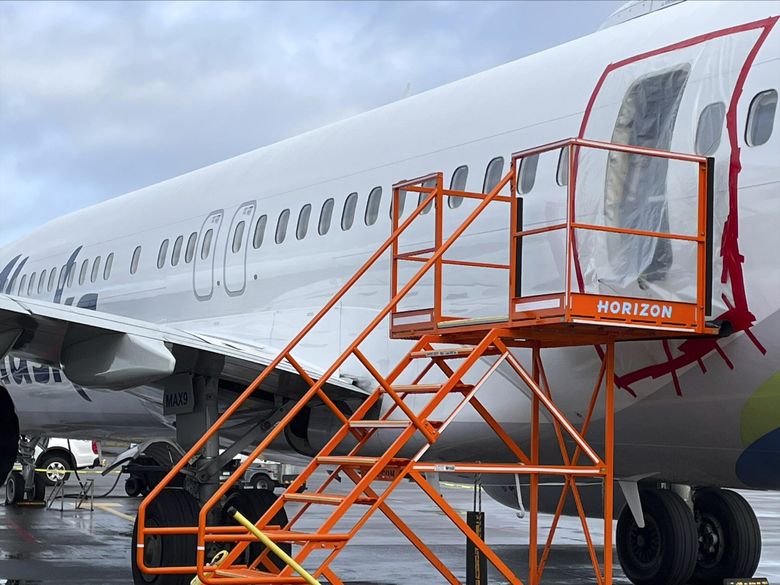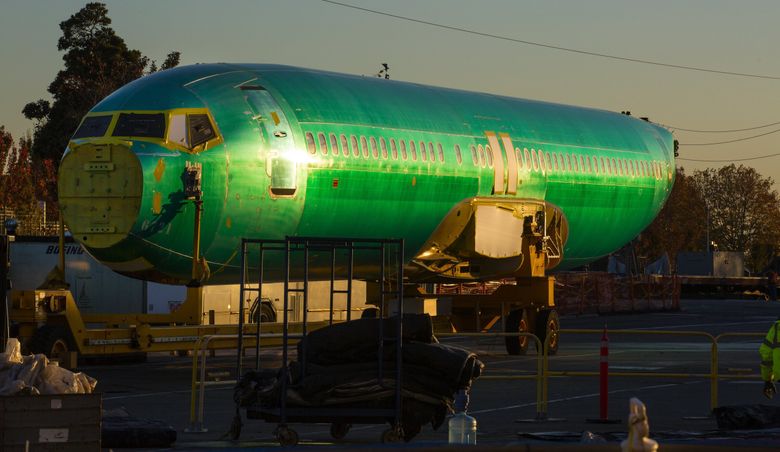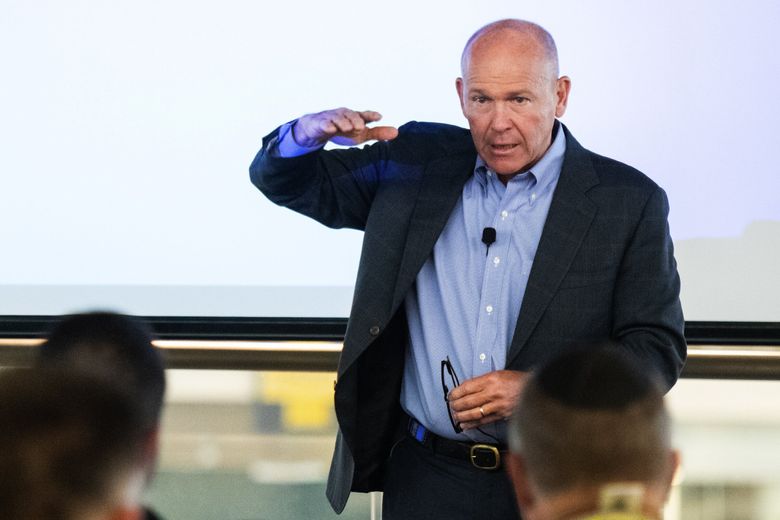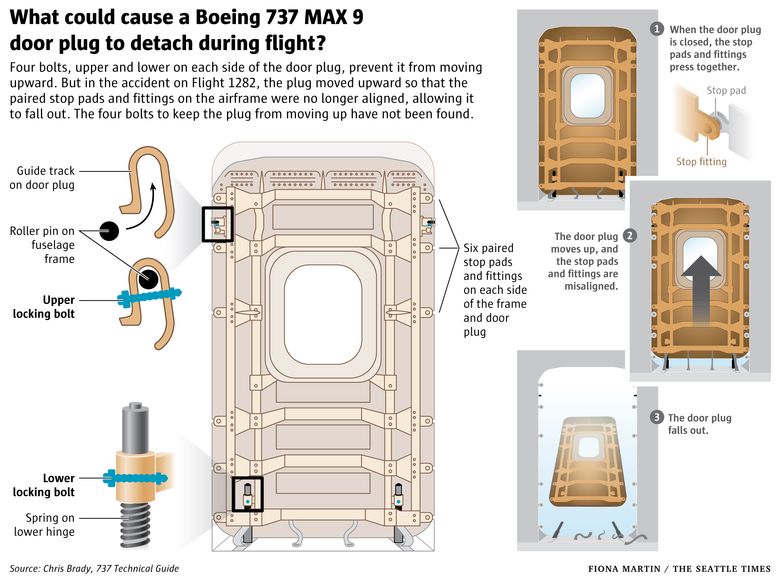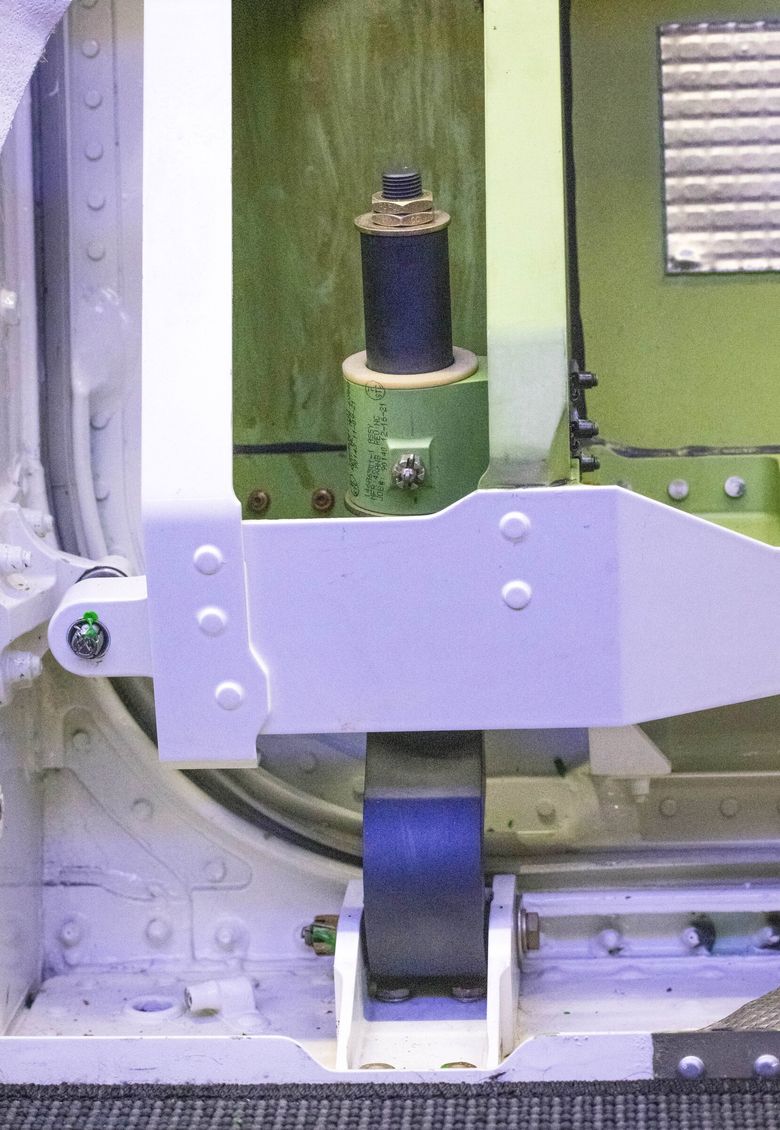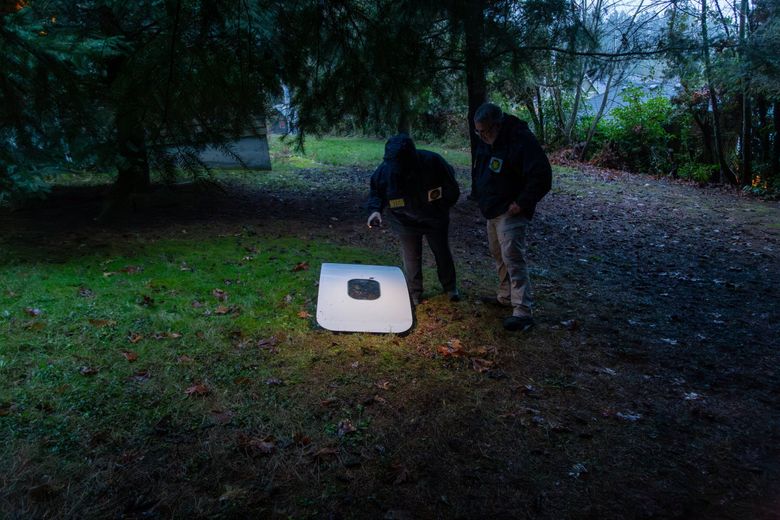When a door-sized section of a 737 MAX 9 fuselage exploded out into the void 16,000 feet over Portland, Boeing’s once-solid reputation, already staggered by the two MAX crashes in 2018 and 2019, took another heavy blow.
The gaping hole that opened up and the violent decompression were terrifying and traumatic for the passengers and crew aboard Alaska Airlines Flight 1282.
Though no one died, and air travel still remains by far the safest form of transportation, this close call on a U.S. flight drew intense attention across the nation.
Everything points to a mistake in installing and inspecting a door plug, the part that blew out — it was assembled by Spirit AeroSystems of Wichita, Kan. — and a failure by Boeing to oversee the work of its supplier or catch the defect when the completed fuselage came to Renton for final assembly.
“It escaped their factory but then it escaped ours too,” Boeing CEO Dave Calhoun said on CNBC.
Bjorn Fehrm, an expert engineering analyst with aviation consulting firm Leeham.net, says the details of how the door plug is held in place make it likely that four critical bolts were either not secured with a nut or, more likely, he said, not installed at all — a startling possibility.
This part, a 2-foot by 4-foot plug that covers a hole sometimes used to accommodate an additional emergency exit, is meant to be permanently fixed in place on most MAX 9s.
Longtime aviation analyst Richard Aboulafia, of AeroDynamic Advisory, said in an interview that the buck ultimately stops at Boeing.
“This isn’t a Spirit jet. It’s a Boeing jet,” he said. “Whoever installed it, whoever built it, Boeing is more responsible.”
And Aboulafia said fixing it means more than inspecting all the door plugs on every MAX 9 and calling it good.
Although all 171 of the grounded aircraft could well be back flying again within a month, inspecting and fixing those parts is now not enough for anyone to feel secure and safe again. The public needs reassurance that the entire aviation manufacturing system can be restored to producing quality airplanes without random life-threatening defects.
“It’s a cultural fix,” Aboulafia said. “That’s much harder.”
The Federal Aviation Administration has a new boss, former airline executive and pilot Michael Whitaker, who now faces tough questions from lawmakers about the safety agency’s failed oversight of the manufacturing work.
Spirit has a new boss too, the hands-on former Boeing executive Pat Shanahan. After the previous CEO was fired, he was appointed to revamp Spirit’s production quality, particularly at its 737 factory in Wichita.
That the Alaska Airlines blowout is only the latest in a long train of setbacks at Boeing means heads may eventually roll there too to make way for new leadership.
Meanwhile, until further notice United and Alaska Airlines cannot fly the dozens of MAX 9s in their fleets, leaving jittery air travelers to face a chaos of canceled flights.
Alaska has been canceling between 110 and 150 flights per day, and scrambling to put passengers on alternative flights.
As the airlines awaited the approval of inspection instructions needed to move forward, on Friday Alaska and United canceled all MAX 9 flights through Tuesday, as well as removing some MAX 9 flights in the days after that.
Forward momentum halted
At the end of last year, though Boeing was still slogging through repairs on long-parked 787s and 737 MAXs, it was finally ramping up new 737 MAX production and deliveries again after pauses forced by a litany of quality defects in 2023.
The jet maker appeared primed to move forward. It had big sales wins at the Dubai Air Show in November. In December, it won new orders for more than 300 MAXs and delivered 44 of the jets.
But the hope of a brighter 2024 that would speed Boeing’s recovery from almost five years of constant bad news blew away with the door plug on Alaska Flight 1282.
If the incident had happened at cruise altitude when some passengers had unbuckled, someone could have been sucked out of the plane. If the door plug that blew off had struck and damaged the horizontal tail or the tail fin, the pilots could have lost control and the jet could have crashed.
Boeing escaped that but still faces an accounting, this time not for a system design flaw as in the MAX crashes, but for a serious quality control lapse that produced a manufacturing defect.
Aboulafia placed blame firmly on CEO Calhoun and Boeing’s longtime focus on cost cutting and financial metrics.
In particular he cited the strategy Boeing euphemistically dubbed “Partnership for Success” that former CEO Jim McNerney pushed: squeezing suppliers with ever lower pricing for their parts.
That led Spirit in particular into a spiral of losing money in making parts for Boeing.
In June, Spirit was $3.7 billion in debt. Its cumulative losses on the 787 Dreamliner program alone amounted to a colossal $1.4 billion, or about $1 million per airplane.
“The idea of demanding more for less endlessly and leaving it to suppliers to worry how they’re going to stay alive, that was just not a viable formula,” Aboulafia said.
By October, the financial distress came to a head, and after Shanahan came in Boeing finally was persuaded to recognize it must pay Spirit more to save it.
It agreed to give Spirit better pricing, with one provision having Boeing pump in an additional $455 million over the next two years to build 440 Dreamliners — about $1 million per airplane.
Aboulafia said unless Boeing returns its focus to engineering and manufacturing, further quality problems will inevitably follow.
“It’s gonna keep happening until they change their culture,” he said. “And that change is not coming from the top.”
“The message from Calhoun and company has been we’ll turn on the free cash flow again, investors will be happy. That’s it,” Aboulafia said.
Since the Alaska Airlines incident, Calhoun has publicly and internally taken responsibility for the mistake and promised to “fix it and make sure it can never happen again.”
But this echoed earlier pronouncements. In September, after misdrilled holes were discovered in the aft pressure bulkhead installed at Spirit, the CEO told Wall Street analysts quality checks had been stepped up.
“I got to tell you,” Calhoun said on the third-quarter earnings call, “these fuselages, man, they have been gone over with a microscope in light of what we’ve experienced here.”
With one quality lapse after another, the promises that everything will be fixed in the future are wearing thin.
On Thursday, the FAA said it has opened an investigation to determine if Boeing “failed to ensure completed products conformed to its approved design and were in a condition for safe operation.”
And lawmakers are stepping up pressure on the FAA to enforce safety regulations and apply penalties.
On Thursday, Sen. Maria Cantwell, D-Wash., chair of the Senate Committee on Commerce, Science, and Transportation, sent a letter to FAA chief Whitaker calling on the agency to produce relevant documents from the past two years’ worth of audits of both Boeing and Spirit.
“We want to know what the FAA has done, what legal enforcement action have they taken,” Cantwell said in an interview. “We need to know whether … we have serious enough actions taken by the FAA.”
Speaking on CNBC Friday, Whitaker said the FAA will increase oversight by auditing the manufacturing process at both Boeing and Spirit.
He added that “we need to look at who’s got authority to make approvals,” and that the FAA will review the current system whereby Boeing personnel sign off on much of their own work.
It seems likely the FAA may now at least delay granting the exemption from safety regulations Boeing requested in December to get the MAX 7 certified.
That could push out the entry into service of both final MAX models, the MAX 7 and MAX 10, blocking some of the cash flow Boeing has promised investors.
Can Spirit be fixed?
Defects at Spirit plagued the MAX program last year.
In April, MAX deliveries were delayed after fittings used to attach the vertical fin were found defective. In August, more MAX deliveries were delayed after discovery of the aft pressure bulkhead defect.
The job of turning Spirit around was handed to Shanahan on Sept. 30. At Boeing he was known as a hard-driving Mr. Fix-It, focused on manufacturing operations. After he left Boeing he served as deputy defense secretary under President Donald Trump.
On Friday, Shanahan, who met with Boeing executives in Renton earlier in the week, released a video message to the Spirit workforce about the Alaska Airlines incident.
He noted that Spirit fabricates 10,500 parts for each 737 fuselage and uses 240,000 rivets to assemble each one.
“Hundreds of thousands of pieces and each part and each installation and each piece must be right,” Shanahan told the workforce.
A person familiar with Shanahan’s approach since he arrived at Spirit — who asked not to be named because of the sensitivity of the National Transportation Safety Board investigation — said getting the Wichita factory running smoothly is “a monster undertaking.”
He added Shanahan is pushing a “a zero-defect mindset” and has instituted a “thorough feedback process” so that when defects are found a robust process is developed to prevent recurrence.
“I’m confident in Pat,” Calhoun told CNBC. “I know that Pat knows the seriousness. … He knows how to interrogate a manufacturing process.”
The jet with the defective door plug was delivered to Boeing at the end of October, the month Shanahan took his position. Now he will have the FAA looking more closely over his shoulder.
No bolts installed?
The door plug that blew out is a panel used to seal a fuselage cutout where a few airlines install an extra emergency exit door so they can add more seats. Most airlines, including Alaska and United, don’t have a door there, instead installing the plug, which appears to passengers inside as just another window.
The plug is secured during flight by the air pressure in the cabin. Six small metal brackets on either side of the door plug — 12 in all, called “stop fittings” — line up with 12 similar “stop pads” on the door frame.
With these pressed tightly together, the stop pads hold the plug in.
The only way for the plug to have blown out is if the plug moved up so the stop fittings were no longer aligned with the stop pads.
For maintenance on the ground, that’s how the plug is opened. A mechanic raises it upward a couple of inches so the plug stop fittings are above those on the door frame. The plug then opens outward on a bottom hinge.
Four bolts, two at the top of the plug and two at the bottom, are inserted to where the plug is attached to the frame to make such upward movement impossible in normal operation.
These bolts have a head at one end and a nut secured with a lock wire at the other to ensure they don’t come out. There’s no stress on the bolts; their purpose is simply to prevent inadvertent upward movement of the door.
After the Flight 1282 blowout, the stop pads on the door frame were intact, as were the stop fittings on the door plug, found last Sunday in a Portland backyard. Somehow, the plug had moved up.
In an NTSB news conference Monday, structures specialist Clint Crookshanks said those four bolts that prevent upward movement have not been found, “and we have not yet determined if they existed there.”
Fehrm, the engineering analyst, explained that even if just one of the four bolts were in place, the door couldn’t move up. With that, and the intact condition of the stop fittings, “my conclusion is there were no bolts in the holes,” he said.
How could the plane, just a couple of months old, have been flying since November without the bolts in place?
Fehrm said there’s no way the plug can move up while the plane is at altitude because the air pressure keeps it tight against the stop pads. Even on the ground, while springs at the bottom counterbalance the weight of the plug, there’s no force tending to shove the door up.
He surmises that when the cabin was not pressurized, for example when landing or at takeoff, if those bolts were missing then vibrations and bumps could have caused the plug to gradually work itself upward over time.
There are metal alignment pins pushed through the door plug stop fittings. Those are not fixed into the corresponding stop pads on the door frame and the tips of the pins could slide up.
NTSB Chair Jennifer Homendy said Monday that the agency’s lab in Washington, D.C., will examine the plug and the connected door frame components and will be able to definitively say whether the bolts were installed by examining the holes for marks.
Inside a different Alaska Airlines MAX 9, parked Wednesday evening outside the airline’s maintenance hangar at Seattle-Tacoma International Airport, the cabin sidewalls had been removed to get ready for inspection and the door plug could be minutely examined.
As is the case on the plug that blew out, an inscription written in marker on the side of the plug gave the part serial number and the words “Made in Malaysia.”
All four bolts to prevent upward motion, each maybe 3 inches long, as well as all the roughly inch-long centering pins on the stop fittings, were snugly in place. It was clear that it would immediately be obvious from a visual inspection if any were missing.
Adding to the mystery, The Air Current aviation news website reported Thursday that during final assembly of the MAX 9 involved in the accident, Boeing mechanics did find some loose bolts in the door frame — different from the four bolts discussed above — around the plug on the right side that did not blow out, and had tightened them.
In typical final assembly operations, despite some reports to the contrary, Boeing doesn’t remove and reinstall the plug. Renton mechanics would touch it only if something were seen to be amiss.
But if it’s true the mechanics tightened some loose bolts around a plug on one side of the airplane, wouldn’t they also have checked the plug on the other side?
The NTSB preliminary report, expected within a month, should tell us if indeed the bolts were never installed.
Another aspect of that investigation will be to assess how well the Flight 1282 cabin crew handled the emergency.
When the cabin decompressed and the oxygen masks dropped, the flight attendants focused on supporting the couple of unaccompanied minors on board and several babies on laps.
But NTSB Chair Homendy said they found it difficult to communicate with one another and understand what had happened. Some of them were unaware there was a large hole in the fuselage.
Analysis of the systems and procedures involved may help draw lessons for similar emergencies in the future.
With both Boeing and the FAA under scrutiny, that leaves the NTSB — a government agency with fewer than 440 employees — as the entity most trusted for an independent investigation of the Flight 1282 close call.
“Our entire mission is not just what happened but why it happened, to prevent it from reoccurring,” Homendy said.
